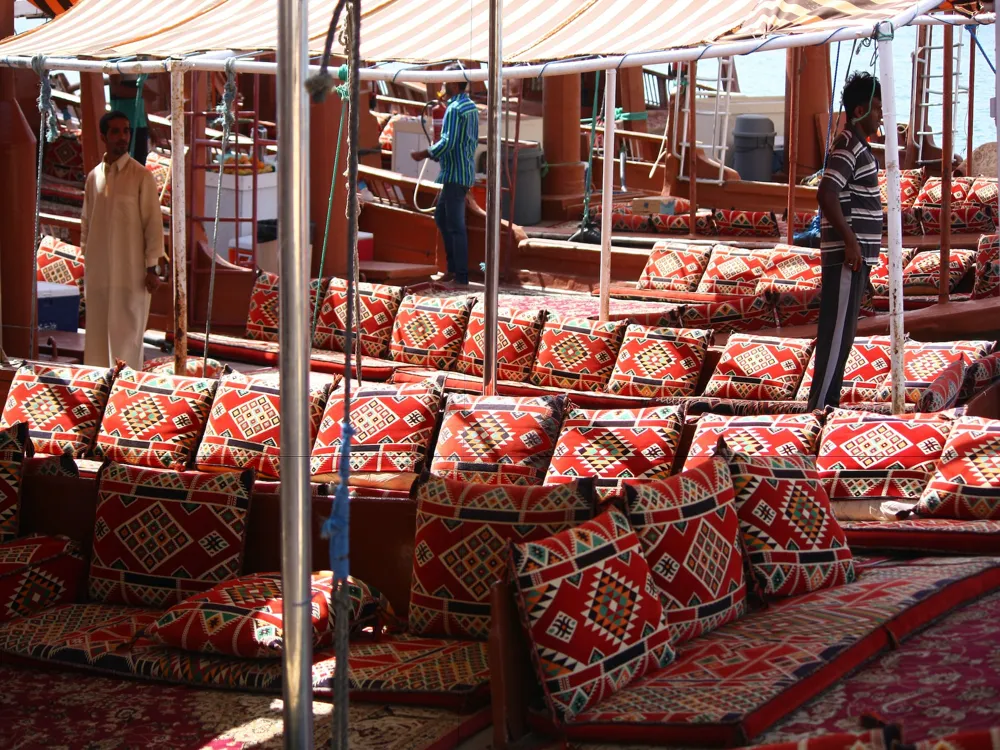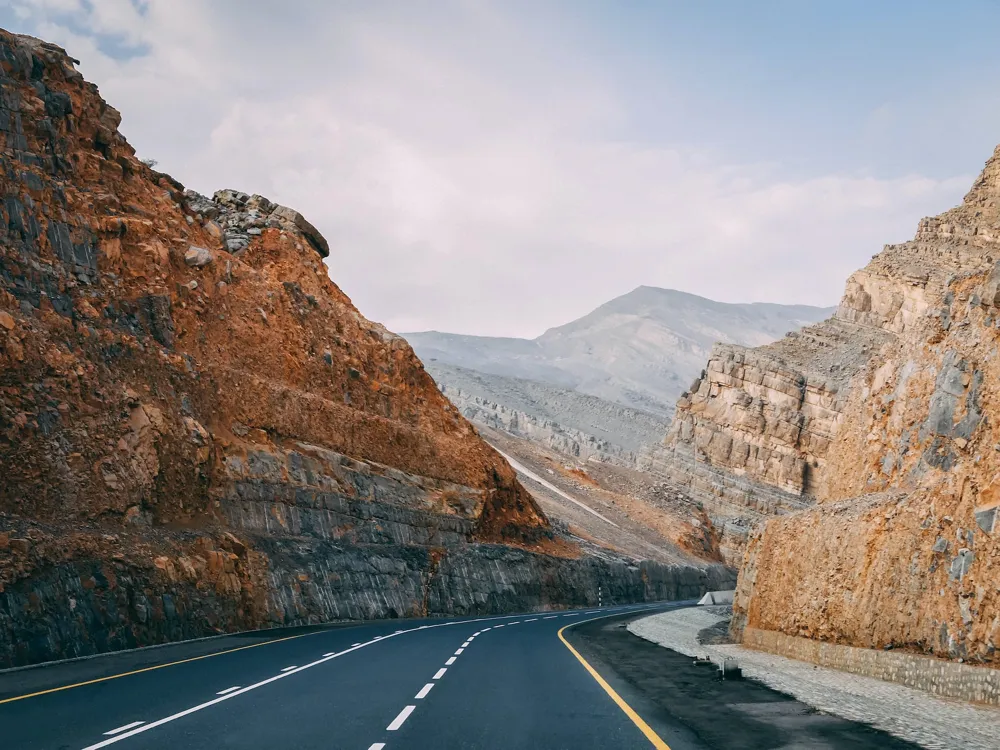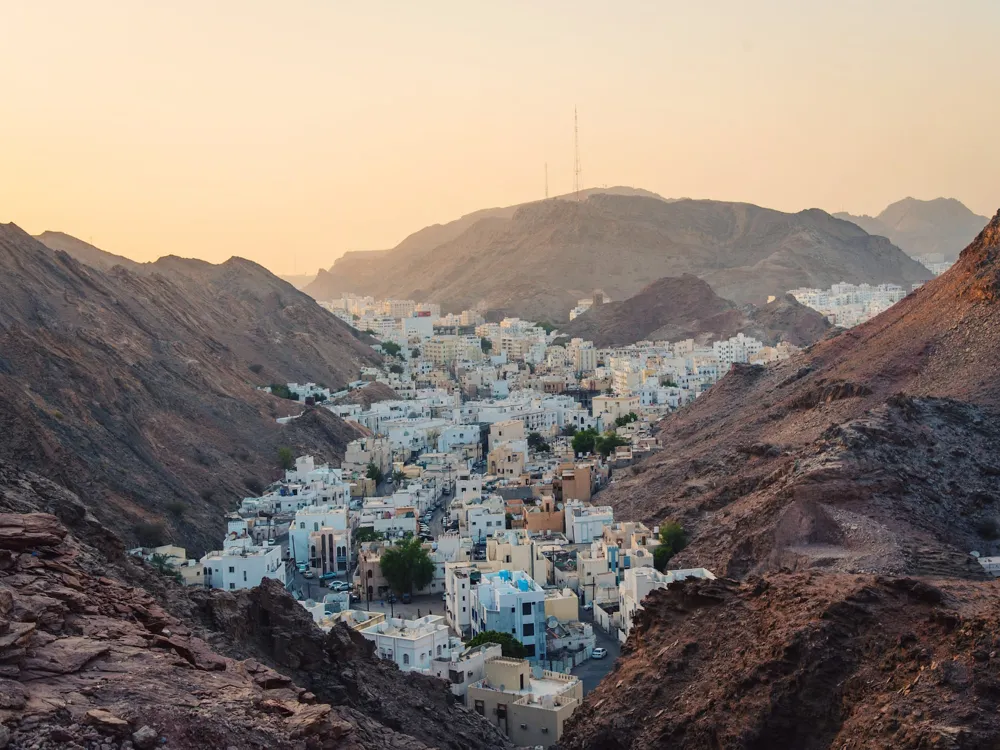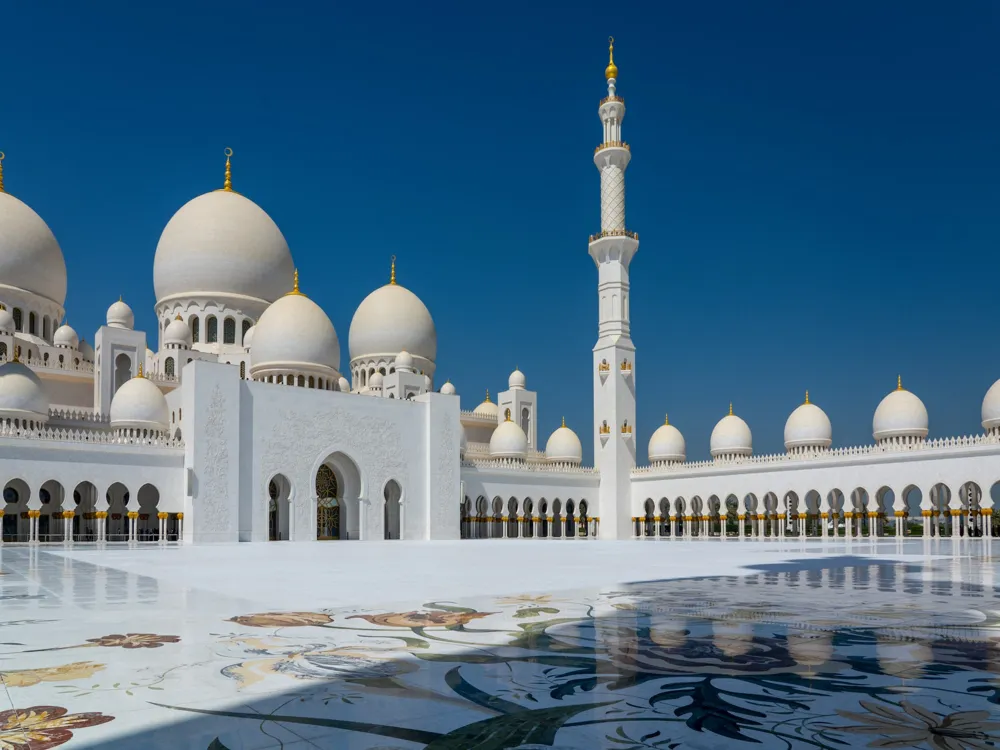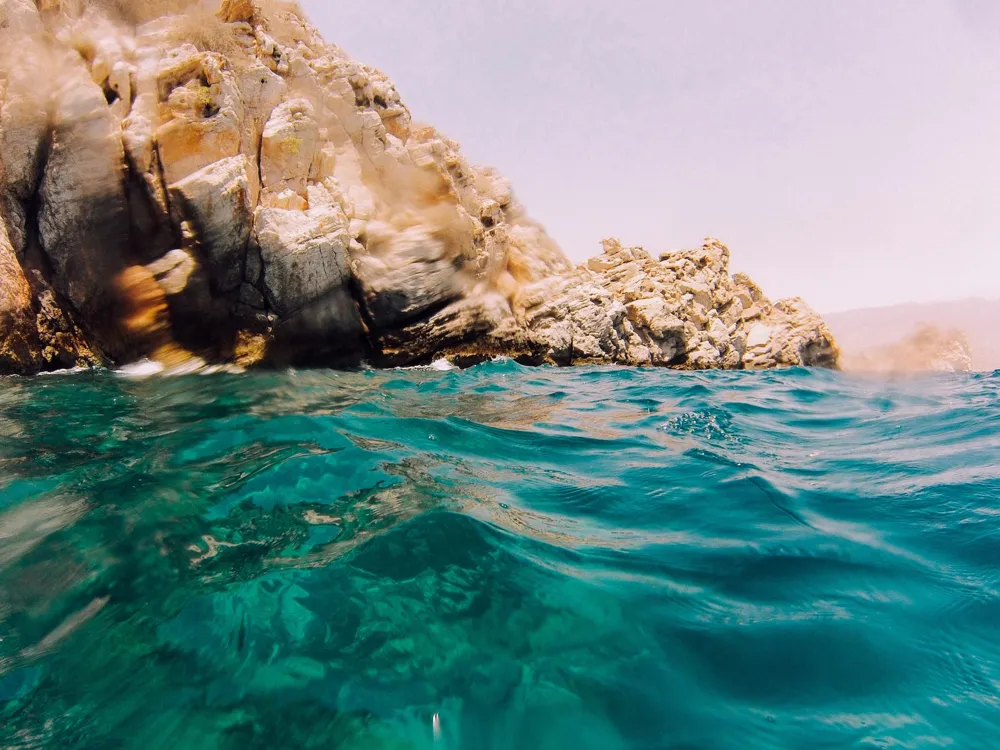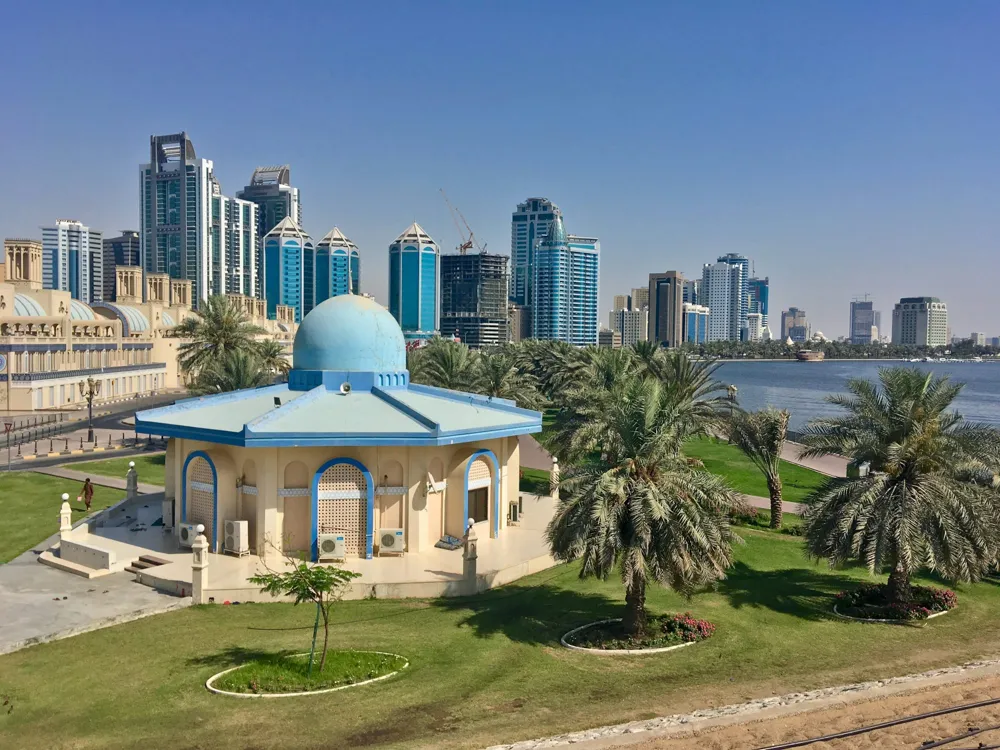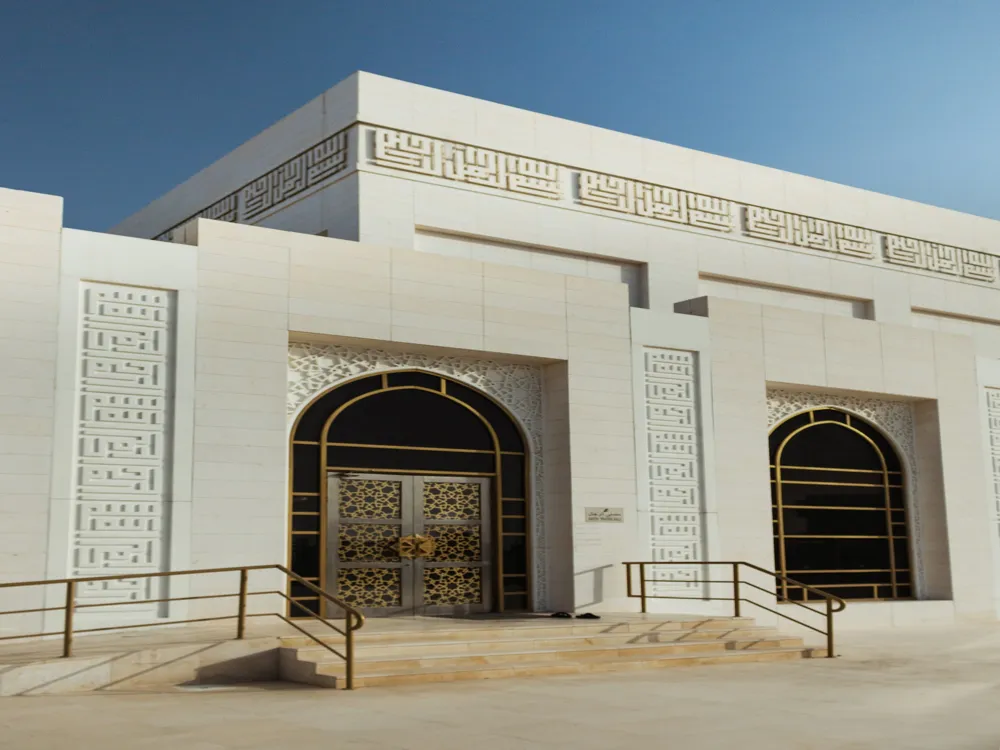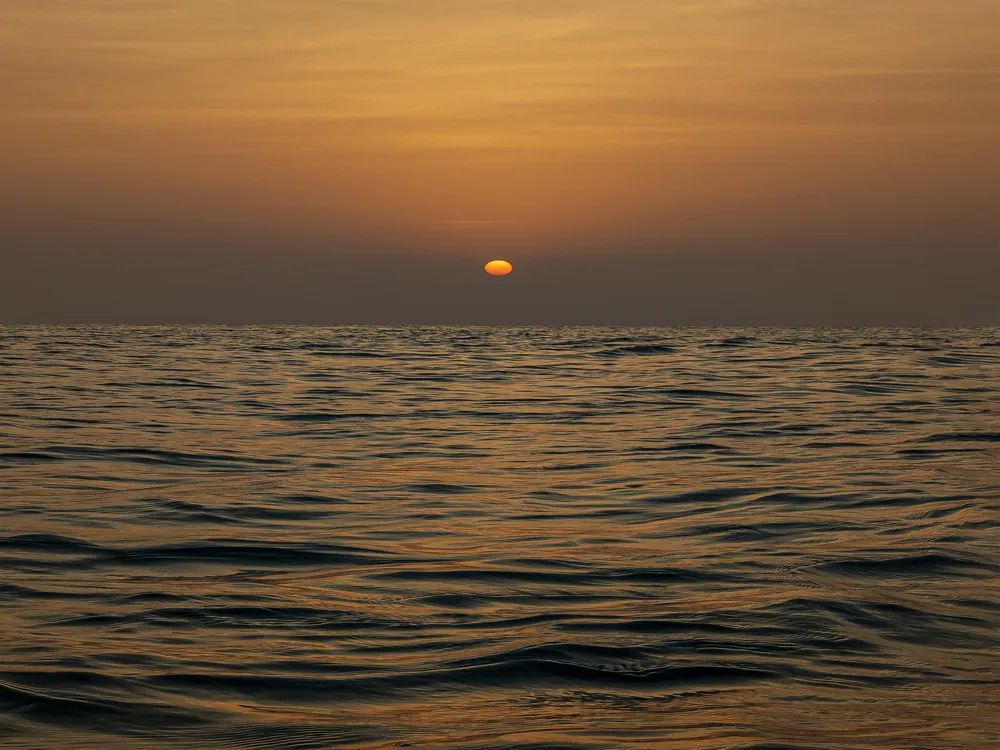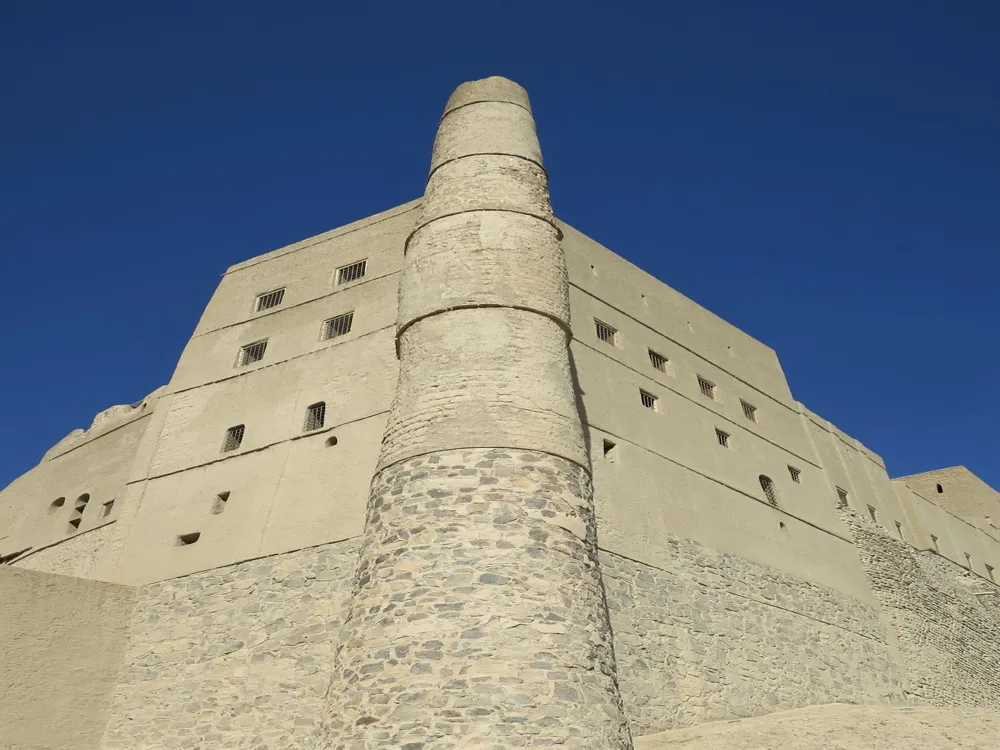Jebel Al Harim, often regarded as the 'Mountain of Women,' stands as a majestic natural landmark in Khasab, the capital of the Musandam Peninsula in Oman. This fascinating geographical wonder, rising to an impressive height of 2,087 meters, is not only the highest point in Musandam but also a treasure trove of ancient history and natural beauty. The mountain's name, translating to 'Mountain of Women,' is steeped in local folklore. It is said that women in ancient times would seek refuge in this mountain to escape from pirates, hence the name. The mountainous terrain of Jebel Al Harim is a testament to the region's complex geological history. The area is rich in fossils, particularly marine fossils, that date back millions of years, offering a glimpse into the earth's distant past. These fossils are a testament to the time when the region was submerged under the ocean. The mountain is also known for its unique rock formations, which include limestone, shale, and other sedimentary rocks, showcasing a natural history book of the earth's crustal evolution. Jebel Al Harim's biodiversity is another aspect that adds to its charm. The mountain is home to a variety of flora and fauna, some of which are endemic to the region. The vegetation varies from sparse and rugged at higher altitudes to lush and green in the valleys, providing a habitat for a range of wildlife including Arabian tahr, foxes, and numerous bird species. The landscape changes with the seasons, offering a dynamic and ever-changing panorama that continues to enchant visitors. For those interested in cultural heritage, Jebel Al Harim does not disappoint. The region is dotted with ancient petroglyphs, rock carvings that provide insight into the lives of people who inhabited the area thousands of years ago. These carvings depict animals, human figures, and other symbols, offering a window into the history and culture of early inhabitants. Additionally, the mountain and its surrounding area play a crucial role in local folklore and traditions, further enriching the visitor's experience. In conclusion, Jebel Al Harim is not just a mountain; it's a symbol of natural splendor, historical significance, and cultural heritage. Its rugged terrain, diverse wildlife, ancient fossils, and petroglyphs make it an exceptional destination for nature lovers, history enthusiasts, and cultural explorers alike. The term 'architecture' in the context of Jebel Al Harim refers not to man-made structures but to the natural architecture formed by millions of years of geological processes. The mountain's formation, composition, and structure offer a fascinating insight into the geological architecture that shapes our world. Jebel Al Harim's architecture is predominantly characterized by its sedimentary rock formations, which are primarily limestone and shale. These rocks were formed from sediments deposited in an ancient ocean that once covered the area. Over millions of years, these sediments were compressed and uplifted, forming the mountain ranges we see today. This process has created a rich tapestry of rock layers, each telling a story of a different geological era. One of the most striking features of Jebel Al Harim's architecture is its fossil content. The area is renowned for its abundance of marine fossils, including ancient corals, mollusks, and other sea creatures. These fossils are embedded in the mountain's rock layers, providing a window into the oceanic life that existed millions of years ago. This aspect of Jebel Al Harim's architecture is not only of scientific interest but also adds to the aesthetic and historical value of the mountain. The mountain's topography is marked by rugged cliffs, deep canyons, and rolling hills, sculpted by natural forces such as wind and water erosion. This erosion process has revealed the intricate layering of rocks and contributed to the mountain's dramatic and varied landscape. The interplay of light and shadow across these formations during different times of the day creates a mesmerizing visual spectacle, enhancing the mountain's natural beauty. In addition to its geological features, Jebel Al Harim's architecture is complemented by its vegetation patterns. The flora varies significantly with elevation, ranging from sparse desert plants at higher altitudes to more lush vegetation in the valleys. This variation in plant life adds another layer to the mountain's natural architecture, creating a diverse and dynamic ecosystem. In summary, the architecture of Jebel Al Harim is a masterpiece of nature's design. Its rock formations, fossil content, rugged terrain, and diverse ecosystems come together to create a landscape of unparalleled beauty and scientific significance. It is a living museum, showcasing the wonders of natural geological processes and the history of our planet. Given the mountain's elevation, weather conditions can vary. It's generally cooler than the low-lying areas, but temperatures can still be high during the day. Dress in layers and carry sunscreen, hats, and water to stay hydrated. The area is ecologically sensitive. Stick to designated paths to avoid disturbing the wildlife and plant life. Refrain from removing any natural objects, including rocks and fossils, to preserve the site's integrity. While exploring, remember that you are in a region with deep cultural traditions. Dress modestly and be respectful of local customs and traditions, especially when interacting with local communities. Access to Jebel Al Harim often requires a 4x4 vehicle due to rough terrain. If you're not experienced in off-road driving, consider hiring a local guide or joining a guided tour. Jebel Al Harim offers stunning photo opportunities. However, always ask for permission before taking photos of local people or private properties. Be cautious not to damage any natural or historical sites while taking photos. Ensure you have a map, a fully charged phone, and inform someone about your travel plans. The area can be remote, so it's crucial to be prepared for emergencies. To reach Jebel Al Harim in Khasab, you have several options depending on your starting point and preferences. If you're starting from within Oman, the most common way is to drive to Khasab. The journey offers breathtaking views and a chance to experience the rugged landscape of the Musandam Peninsula. For those coming from other countries, the nearest international airport is in Khasab, which is served by flights from various regional destinations. From the airport, you can rent a car or hire a taxi to take you to Jebel Al Harim. Another popular option, especially for tourists coming from the UAE, is to take a ferry from Dubai to Khasab. The ferry ride itself is an experience, offering stunning views of the coastline and the possibility of spotting dolphins. Once in Khasab, you can rent a vehicle or join a tour to reach Jebel Al Harim. For the adventurous, trekking to Jebel Al Harim is an option. However, this should only be attempted by experienced hikers and preferably with a guide, as the terrain can be challenging and navigation tricky. Whichever mode of transportation you choose, reaching Jebel Al Harim is part of the adventure and an opportunity to immerse yourself in the stunning landscapes of the Musandam Peninsula. Read MoreOverview of Jebel Al Harim in Khasab
Architecture of Jebel Al Harim
Tips When Visiting Jebel Al Harim
Prepare for the Climate
Respect the Natural Environment
Be Mindful of Cultural Sensitivities
Plan for Transportation
Photography Etiquette
Stay Safe
How To Reach Jebel Al Harim
Khasab Tourism
Best Time to Visit Khasab
How to Reach Khasab
Things To Do Khasab
Jebel Al Harim
Khasab
NaN onwards
View khasab Packages
Weather :
Tags : Hills & Valleys
Time Required : 2-3 hours
Planning a Trip? Ask Your Question
Khasab Travel Packages
View All Packages For Khasab
Top Hotel Collections for Khasab

Private Pool

Luxury Hotels

5-Star Hotels

Pet Friendly
Top Hotels Near Khasab
Other Top Ranking Places In Khasab
View All Places To Visit In khasab
View khasab Packages
Weather :
Tags : Hills & Valleys
Time Required : 2-3 hours
Planning a Trip? Ask Your Question
Khasab Travel Packages
View All Packages For Khasab
Top Hotel Collections for Khasab

Private Pool

Luxury Hotels

5-Star Hotels

Pet Friendly









